Harp On It: 20 Great Rock Songs Featuring Harmonica
by Jeff Tamarkin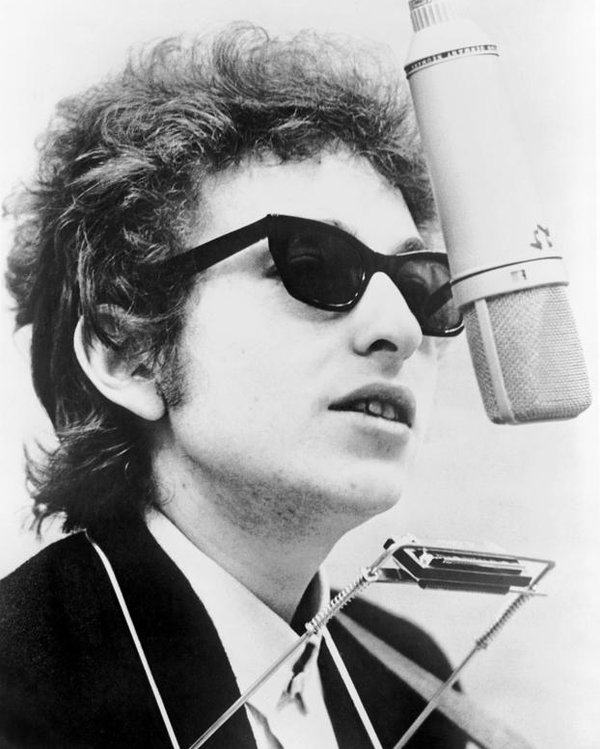 If you’re the frontperson in a band and you want to get a rise out of your audience, there are several tried-and-true tricks you can pull out that are guaranteed to get a reaction. You can mention the name of the city you’re performing in (“How ya doin’ tonight, Cleveland?!”). You can drop a reference to drugs or alcohol in one of your songs (Neil Young: “And I felt like getting high.” Audience: “Yaaaayyy!”). You can request a sing-along or a handclap-along or feign a sexual act on one of your bandmates.
If you’re the frontperson in a band and you want to get a rise out of your audience, there are several tried-and-true tricks you can pull out that are guaranteed to get a reaction. You can mention the name of the city you’re performing in (“How ya doin’ tonight, Cleveland?!”). You can drop a reference to drugs or alcohol in one of your songs (Neil Young: “And I felt like getting high.” Audience: “Yaaaayyy!”). You can request a sing-along or a handclap-along or feign a sexual act on one of your bandmates.
Or you can just play a harmonica. It works every time.
But first, one thing a performer should know is that it’s not as easy as it looks. Sure, anyone can blow into the holes and get sound out of the instrument, but relatively few—as is the case with any instrument—can master the harmonica (alternately called the mouth harp, or just the harp, not to be confused with the other kind of harp that’s really large and has lots of strings on it). Some players work at it their entire lives, but relatively few get really good at it.
Still, that doesn’t mean that many don’t at least try, and in rock, especially, the harmonica has long been used—particularly by lead singers—to inject a bit of bluesy, earthy authenticity into a song. Throughout the course of rock history, many songs have featured harmonica parts that are indelible—you can’t even imagine that song without the familiar harmonica lead-in or break.
We got to thinking about the role of the instrument in classic rock, and we came up with dozens of great tunes featuring harmonica, which we’ve narrowed down to 20. Some of these songs are by artists whose primary instrument is the harmonica; most are lead singers who double on harp. All of these tunes are pretty great.
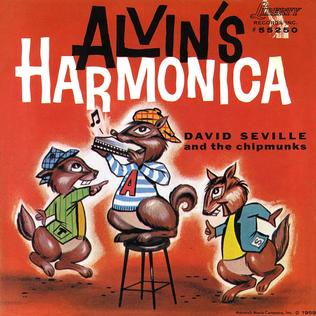 We know we’ve left out a ton of other cool harmonica-infused songs and we’re sure you’ll let us know which ones in the comment section. No need to include The Chipmunks’ 1959 #3 hit “Alvin’s Harmonica” though. We all know that Alvin started this whole thing.
We know we’ve left out a ton of other cool harmonica-infused songs and we’re sure you’ll let us know which ones in the comment section. No need to include The Chipmunks’ 1959 #3 hit “Alvin’s Harmonica” though. We all know that Alvin started this whole thing.
Little Stevie Wonder—“Fingertips Pt. 2”
Speaking of starting things, this is where it all began for the genius—and it’s one of the first pop/rock hits with a prominent role for the harmonica. Stevland Morris was all of 12 when he recorded it in 1963 and it became not only his first single to chart but his first #1. Wonder has continued to play the harmonica but this early slab proves that he already had a gift in childhood. Here he is performing his first big hit.
The Beatles—“Love Me Do”
You probably don’t think much about the role of the harmonica in The Beatles’ music, but it turns up surprisingly often, especially on their earliest recordings. On their 1962 debut single, “Love Me Do,” John Lennon plays it from the second the song begins, and he never lets up, punctuating the verses with his repeated lick and finally taking a solo around two-thirds of the way in.
The Rolling Stones—“Midnight Rambler”
Obviously, playing the harmonica is not what Mick Jagger does best. But make no mistake, the dude can play it. He’s pulled out the harp on numerous occasions, but this late ’60s classic is undoubtedly the most prominent. The song remains an integral part of the Stones’ set to this day.
The Paul Butterfield Blues Band—“Work Song”
One of the earliest and most influential harpists in blues-rock, the Chicago native showed off his skills on his namesake band’s debut album in 1965. But he really started to take it someplace new on East-West, the followup released in ’66. This instrumental, composed by jazz trumpeter Nat Adderley and featuring Butterfield’s soulful interludes and wailing solo, gets a psychedelic workout from this extraordinary band (which also features Mike Bloomfield on guitar).
Charlie Musselwhite—“Christo Redemptor”
Although born in Mississippi, Charlie Musselwhite became known as one of the greatest of the Chicago blues harmonica players and vocalists. “Christo Redemptor,” written by jazz pianist Duke Pearson and featured on Musselwhite’s debut album, 1967’s Stand Back! Here Comes Charley Musselwhite’s Southside Band, is a signature piece that features his smooth, melodic, swinging blowing.
John Mayall and the Blues Breakers—“Parchman Farm”
The British blues-rock pioneer was a multiple threat: vocalist, guitarist, pianist and, yup, harmonica guy. “Room to Move,” from his 1969 acoustic album The Turning Point, became a classic in large part due to the prominent harp. But go back a few more years, to his Blues Breakers With Eric Clapton, and check out the intense version of Mose Allison’s “Parchman Farm” if you really want to hear what Mayall could do with a blues harp.
The Yardbirds—“I’m a Man”
If you want to have your mind seriously blown (to use the parlance of the times), scroll ahead to the 90-second mark and listen to Jeff Beck create the future of rock guitar. But then go back and listen from the start so you don’t miss the fabulous Keith Relf’s impassioned playing on this Bo Diddley classic.
Cream—“Traintime”
As a guitar-bass-drums trio, Cream didn’t have many opportunities for augmentation. But like many of the other frontmen on this list, Jack Bruce knew his way around a harmonica and he showed it off superbly on this original track, recorded live in San Francisco in 1968 for the Wheels of Fire album.
The Hollies—“He Ain’t Heavy, He’s My Brother”
Singer Allan Clarke’s harp is light and understated here, used sparingly at the beginning and toward the end, but it helps to give this beautiful tune much of its richness and reflective mood.
Related: Our interview with Allan Clarke
Bob Dylan—“Absolutely Sweet Marie”
The image of Dylan strumming a guitar while blowing into a harmonica hanging from his neck on a holder is burned into the minds of a couple of generations—because of Dylan, countless singer-songwriters learned how to play the instrument. You can make a good case for any of dozens of songs on which he plays one (think early acoustic “Mr. Tambourine Man”), but we zeroed in on this rocking track from 1966’s Blonde on Blonde—three minutes in, Dylan breaks out the harp and just nails the solo.
The Grateful Dead—“Good Morning Little Schoolgirl”
In their earliest years they were in good part a blues band, fronted by the inimitable Ron “Pigpen” McKernan. When Pigpen stepped away from his organ to sing a blues tune at center stage, he inevitably brought out his harmonica, showcased on this cover, on the band’s debut album, of a classic first performed by the original Sonny Boy Williamson.
The J. Geils Band—“Whammer Jammer”
These blues-loving virtuosos had a dedicated harpist among their ranks, who went by the name of Magic Dick (real name: Richard Salwitz). He was, to put it mildly, a monster of a player, and there’s evidence of that on all of the band’s albums. “Whammer Jammer,” featured on the band’s The Morning After album, is as good as it gets.
The Doors—“Roadhouse Blues”
Jim Morrison was not an instrumentalist; he left that to the other three in The Doors. So when the group needed some funky blues harp fills for this track on their Morrison Hotel album, they called up someone who could play the hell out of the harmonica: the Lovin’ Spoonful’s John Sebastian. Yep, that’s him you hear on “Roadhouse Blues.” Sebastian, by the way, was a second-generation harpist; his father, also named John, was considered one of the great masters of classical harmonica.
Bruce Springsteen and the E Street Band—“The Promised Land”
The thumping, hopeful anthem from 1978’s Darkness on the Edge of Town is one of many tunes on which Springsteen breaks out the harp, and not surprisingly he wails away admirably, adding a soulful interlude just where it’s most needed.
Canned Heat—“On the Road Again”
Like their other signature hit “Going Up the Country,” this is sung by guitarist Alan Wilson, who also plays the harp on this famous studio version.
Neil Young—“Harvest Moon”
Like Dylan, Neil Young seems to have a harmonica holder permanently strung from his neck. He uses the instrument often, but especially when he performs acoustically, preferring a soft, lyrical touch—as on this tender track from the 1992 album of the same name. (The short and sweet solo arrives at the 4-minute mark.)
Led Zeppelin—“When the Levee Breaks”
Think of Led Zeppelin and harmonica comes immediately to mind. No, of course it doesn’t! But they did occasionally toss one into the mix, and never as prominently as here, the final song on their untitled fourth album. From the first seconds, Robert Plant’s wailing is a major presence, pushed through various studio treatments to sound nasty and heavy and entirely Zep-like.
The Doobie Brothers—“Long Train Runnin’”
About 90 seconds into this 1973 funk-fest by the California band, lead vocalist Tom Johnston tears loose on a bluesy solo that takes it to another place altogether.
Related: Our feature on “Long Train Runnin'”
Billy Joel—“Piano Man”
Nobody would ever mistake Billy Joel for a great harmonica player—I mean, the name of this song kind of gives away what he does. But the harp break is such an intrinsic part of “Piano Man” that the song would feel less full without it.
Little Walter—“My Babe”
We’ve concentrated on performances by rock bands and individual performers in this survey, but we don’t want to give the impression that our rock friends made all this stuff up. Talk to any one of them and they’ll give you a rundown of the harmonica masters who influenced them, including Sonny Boy Williamson II, James Cotton, Junior Wells and this brilliant musician, Walter Jacobs, integral to the development and direction of Chicago blues. Walter was the first artist who specialized in harmonica to be inducted into the Rock and Roll Hall of Fame (in 2008) and “My Babe” is one of the reasons why.
- 74 From 1974: The Albums We Listened To - 12/23/2025
- Remembering Joe Cocker: Rock’s Soulful Interpreter - 12/22/2025
- The Yardbirds, with Both Beck and Page, in ‘Blow-Up’ - 12/18/2025

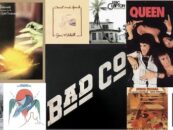
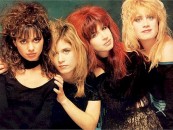
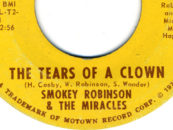
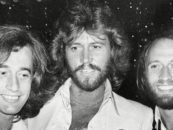

32 Comments so far
Jump into a conversationTom Johnston of the Doobies is flat out the man. What a talent. Great singer, harmonica player, lead guitarist and songwriter extraordinaire. So glad he’s finally getting into the R+R Hall, should have been decades ago. .
If you don’t include Southside Johnny’s version of The Fever what’s the point?
Everybody probably has harmonica songs not included on the list.
The first ones that come to mind for me are:
John Mayall – Room to Move
Roy Rogers snd Norton Buffalo – So Much to Say.
War had a number of tunes, with the unique combination of Lee Oskar’s harp mixed with sax.
Blues Traveler- “Run Around”
Bruce Channel- “Hey Baby”(with Delbert McClinton on harp)
The Stones also had a second harp player, Brian Jones.
Mick Jagger’s harmonica playing on “Might as Well Get Juiced” from “Bridges to Babylon” sounds like it came straight from Led Zeppelin’s “When the Levee Breaks” and it sounds awesome.
To see Magic Dick play live was almost a religious experience, this guy could flat out play with the best of them. Have to admit that Jagger was also pretty damn good for a guy who was really only known for his lead vocals. Adding a Harp player just adds to a band in a live setting.It’s always great to listen to a guy who can really blow that Harp.
I would hope that such a solid, radio-friendly list as you have here would include “Oh, Girl” by the Chi-Lites.
Technically, that wasn’t a harmonica on “Oh, Girl.” (Which is a great song, by the way.). It was a melodica, which is a handheld keyboard instrument that you blow into.
Gotta say, Hopper dominates.
And give a listen to a little known gem, Pokey Lafarge…not only a great Americans band, but his harp man is second to none.
The track I love is “I Should Have Known Better.” Brilliant!!
the best harp solo I ever heard was Norton Buffalo on Bonnie Raitt’s cover of “Runaway.”
Norton was a hard genius, no doubt. Untouchable, but Huey Lewis blew a fine break on Working for a Living.
The marvellous Paul Jones from Manfred Mann/The Blues Band deserves to be included here.
Also, Bob Young from Status Quo is a great addition to this list.
Paul Butterfield Band: “Born in Chicago.”
Absolutely brilliant but we decided to go with “Work Song” instead.
These are all great but my favorite is “Take The Long Way Home” by Supertramp.
I was going to mention this one if no one had!
Phil Lynott – Ode To a Black Man
The Good, The Bad & The Ugly movie title soundtrack harpster….
Bardzo mi zaimponował Don Baker – Live At The Olympia 1991.
As with any list, each can always leave off every rock fan’s unique choices. There is never one definitive list.
That stated, I would like to include the amazing intro harp action on Blackfoot’s “Train Train”, as well as the soulful mid-song harmonica on Wet Willie’s “Keep On Smiling”, courtesy of the multi-talented Jimmy Hall.
Wet Willie – Keep on Smilin’ … Jimmy Hall not only a great singer but a hell of a harp slinger. Song was a top 10 hit and had a memorable melodic harp solo. Big oversight here…
Bruce Channel, Hey Baby
The Rascals, Groovin’
As usual, Grank Funk Railroad left out. “Inside
Looking Out” great harmonica from one of the greatest frontmen Mark Farner!
Whooping the blues, Sonny Terry, playing the rag, Terry
James Cotton’s harmonica on “Sweet Maree” off Steve Miller’s “Fly Like An Eagle” was really blue.
Come on! How can you possibly omit The Ozark Mountain Daredevils song “If You Want To Get To Heaven”?
As stated above Everybody probably has harmonica songs not included on the list. I would add or substitute Chuch is Out – Charlie Musselwhite
5-4-3-2-1 and Hubble Bubble by Manfred Mann. Their early LPs just sizzle.
How could you omit War, with Lee Oskar’s harmonica, especially on “Cisco Kid”?
You forgot “Living in the USA” by the Steve Miller Band. That should be one there!
The Moody Blues used the harmonica on many of their songs with the late Ray Thomas providing the licks.